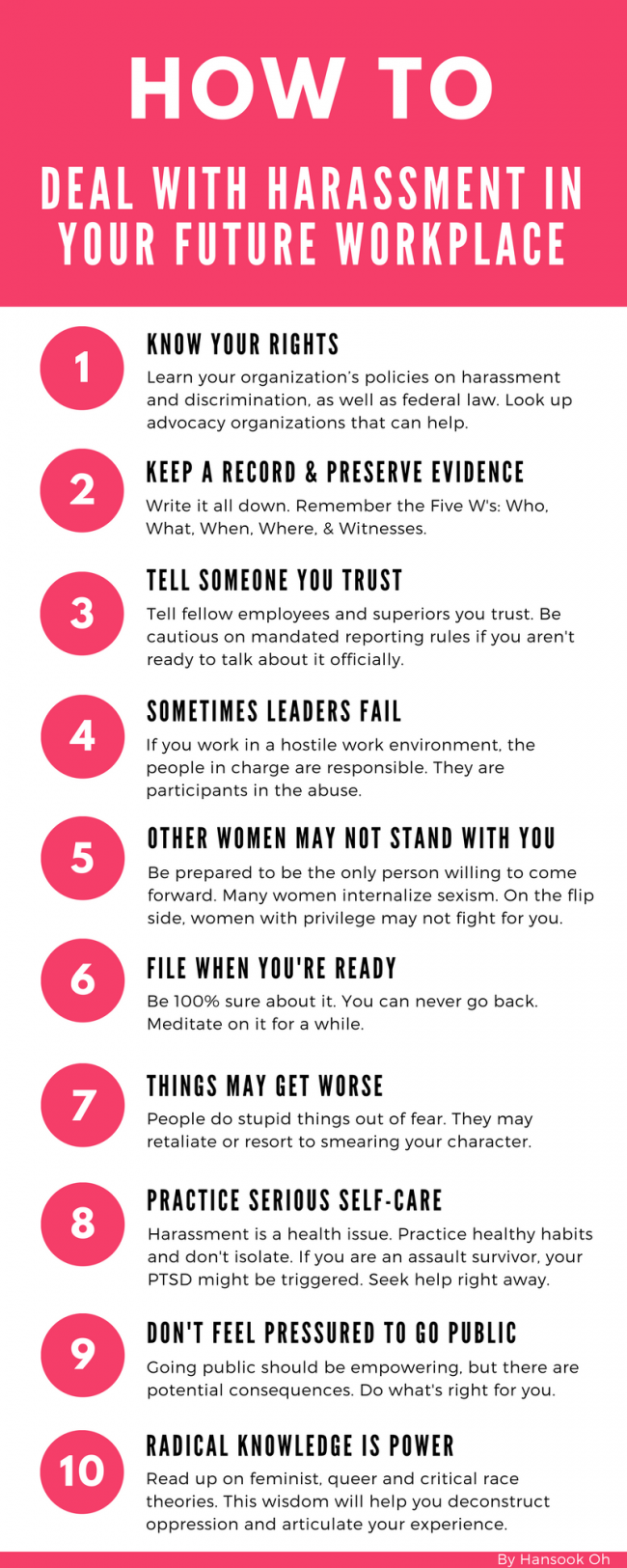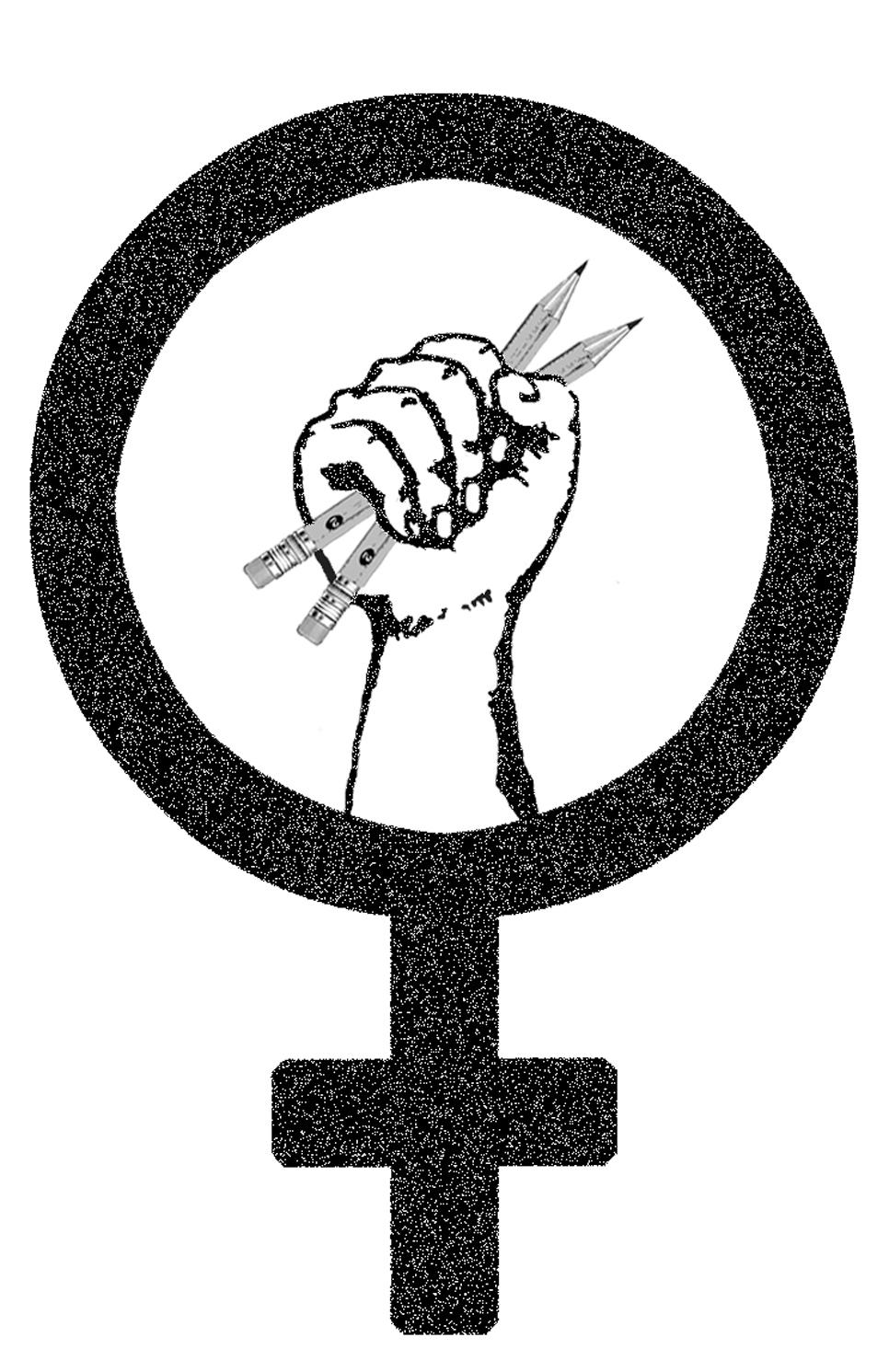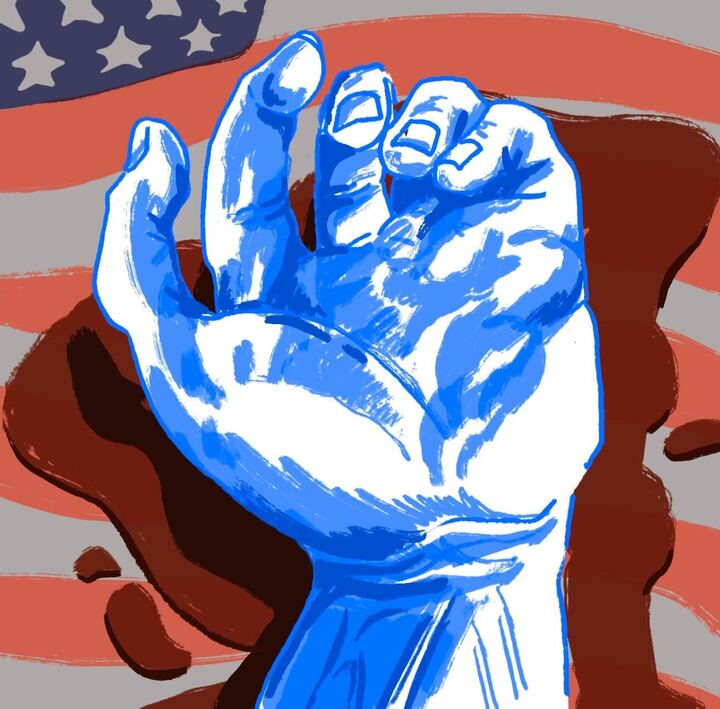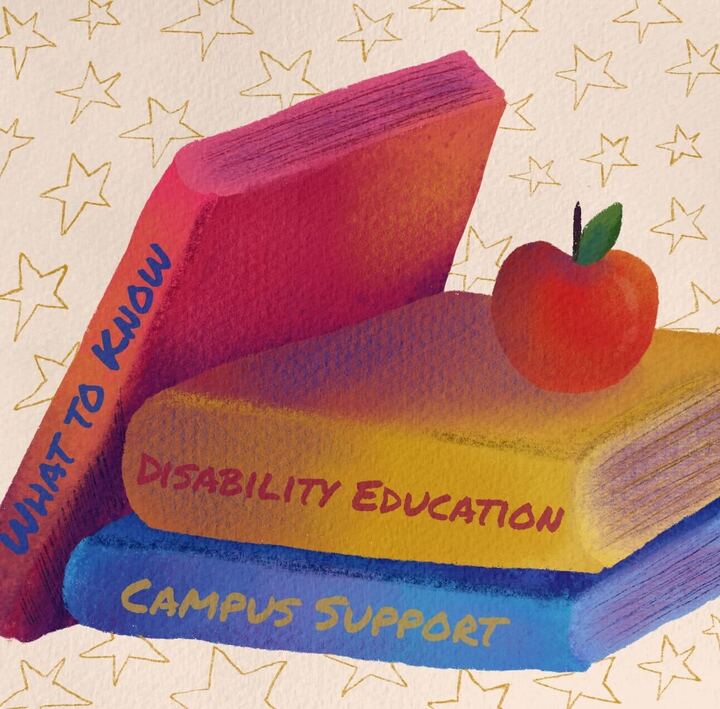Ten years ago on a sweltering August day, I stepped foot on this campus for the first time as a freshman student. I was excited to start my college career, confused about where all the buildings were, and sweaty from the running (I accidentally enrolled in two classes ten minutes apart, located at the opposite ends of campus). I also spent an hour at the end of the day looking for my car, as I forgot where I parked it.
In the past decade, I earned a bachelor’s degree in journalism with a double major in Asian American studies and a master’s degree in mass communications, got my first professional job working for the university, and this past semester, I taught my first class as a part-time faculty. I am Asian American, an out and proud Queer person, and the first person from my low-income immigrant family to go to college. I’ve won awards for my student journalism, been published, spoken on panels, and this year I plan to start writing a book which will explore the intersection of mental health, race, gender, sexuality, socioeconomic status, and religion.
I am everything this university celebrates, and by its standards and traditions, my story is a classic California State University, Northridge success story.
How disappointing then, that at the place I call home, I had to file a complaint of harassment against a certain supervisor at the CSUN Department of Marketing and Communications.
My position as a Media Relations Coordinator at M&C in the fall of 2016 provided me my first full-time professional work experience after earning my graduate degree. I was excited to begin my career as a communications professional. I was ready to work, put all my higher education to the test, and prove myself as a young woman. I was ready to “adult.”
I just didn’t think my first real attempt at adulting in the 21st century would include having to file a seven-page complaint outlining how I witnessed sexual harassment of another female employee, and experienced physical and verbal intimidation, and suffered from discriminatory actions that made me feel highly uncomfortable as a Queer person. I didn’t think adulting would include watching women–particularly women of color – suffer in a hostile environment to the point where we’d cry on each others shoulders. And I never imagined adulting included hearing that my supervisor was using my mental health to try to detract from my allegations, and having to fight ideas of self-harm from feeling so worthless and humiliated.
Perhaps I was naive to think that at one of the most diverse and inclusive universities in the world, I wouldn’t have to go through anything like the horror stories my older female mentors would tell me. It was the classic, ”you hear about these kinds of things, but you never think it will happen to you,” scenario. This happened to me at the age of 26 – millennials are not immune to harassment.
I’ve been unpacking my work-related trauma for more than a year now and I feel like I should get another degree for passing “Harassment 100-600.” Because if filing my complaint was some twisted exam from a professor from hell, I know I passed with flying colors. I’ve graduated, summa cum laude and everything, and the world is my stage. I’ve become an expert in my own experience as a young professional woman, and now the student-turned-teacher in me wants to create a curriculum out of it.
This “How To” guide is for all you young women graduating this semester. You may have to navigate sexual harassment, discrimination or hostile work environments much earlier in your professional careers than you expect. To serve CSUN students specifically, this guide is written for women of color, queer women and trans women, women with disabilities, immigrant women, women who are the first in their families to go to college, and undocumented women. I hope you never have to go through anything like what I did, but if you do, I want you to know how you can exercise your agency.
CSUN’s branding centers around the concept of rising. To me, with our incredible history of students, faculty and staff rising up against oppression, fighting harassment is in lock-step with our brand. Because when women Matadors rise, we all do. When Matadors of color rise, when Queer Matadors rise, when Matadors with disabilities rise, when undocumented Matadors rise, when first-generation Matadors rise – we all do.
So go out there and rise up. Use your power as educated women to stand up for yourselves. And if anyone gives you trouble, if anyone tries to hold you down or take your shine, don’t “keep calm and carry on.”
Raise hell.
H.A.G.S.
Your friend,
Hansook Oh
#MatadorForLife #CSUN #MeTooHigherEd #TimesUp #NotAnymore #YesAllWomen #HarassmentsStupid #TryMe #ComeAtMeBro #FeelingHellaGood
Hansook Oh is a former opinion editor of the Daily Sundial and used to run a column called “The Hot Soup with Hansook.” She is a two-time CSUN alumna, a writer, an educator, and an advocate for mental health and sexual assault survivors. She doesn’t have time for sexism or misogyny. And she is literally one of the last people anyone should ever dare try to harass. Like ever.
 Ten Things to Help you Navigate the Process of Reporting Harassment or Discrimination
Ten Things to Help you Navigate the Process of Reporting Harassment or Discrimination
1. Read up on your organization’s policies on harassment and discrimination as well as federal law and resources on the matter.
If you work for a major corporation, organization, or university, there are rules and regulations in place to protect you. Look up the employee handbook, consult human resources, take online or in-person trainings if available or go to an agency like Equity and Diversity (if there is one) to ask for advice. Find out exactly who in human resources deals with these cases. If you are lucky enough to be part of a union, go to your union representative so they can advocate for you. There are federal and state resources to turn to, such as the Equal Employment Opportunity Commission (EEOC). This is critical for those who are working for small businesses or startups without an official policy against harassment or discrimination. Harassment of any kind is illegal until federal law. For those of protected status, specifically Title VII of the Civil Rights Act of 1964 prohibits harassment based on sex, race, color and national origin. Sex includes pregnancy status, gender and gender expression, disability or genetic information. Federal law also makes it illegal to harass undocumented workers. Retaliation for filing a complaint or participating in a lawsuit is also illegal. If you are going to file a complaint to the EEOC, know that you have between 180 to 300 days to file (depending if your state enforces federal law) from the date of the harassment or discrimination that took place.
There are also plenty of advocacy organizations that can provide legal advice. The American Civil Liberties Union (ACLU) helps with civil rights cases of many kinds. Many women’s organizations, such as the National Organization of Women and the National Women’s Law Center. GLAD Legal Advocates and Defenders and Lambda Legal help people in the LGBTQ community. The Immigrant Defense Project and the National Immigration Law Center help the undocumented community. The Disability Rights Advocates, Disability Rights Legal Center, and the Disability Rights Education and Defense Fund help people with disabilities. There are also many organizations that advocate for different racial and ethnic communities, just do your research. You can check out the Campaign for Justice website for a listing of organizations just in the state of California.
2. Keep a detailed record and preserve all evidence.
Write everything down as soon as you can after you witness or experience harassment in a journal or online (in a Google Doc or cloud system so you don’t lose it). Follow the Five W’s: Who, What, When, Where & Witnesses. Who participated in the harassment? What did you see or hear? What time was it? Where did the incident happen? Who was around you to witness the event? You can also write down how you felt emotionally. Sign and date your journal entry or memo if you want to make it more official. When you file, you can draw from or attach your memos. If there are pieces of evidence such as email correspondence, text messages, or other documents, download them and print them out before someone has a chance to get rid of them. Context is also important. Even if something may not rise to the level of harassment, write down anything that makes you feel uncomfortable. Off-colored jokes or comments, non-verbal gestures – these might seem “harmless,” but they are really microaggressions that add up to create a stressful space for employees.
3. Tell people you trust about what’s happening.
If you are lucky enough to have a trusted mentor or someone in power who can make a difference, tell them about the incident. Be careful, however, if you are not ready for an investigation or to file a formal complaint, as some supervisors are mandated reporters who have to report if they find out about if their employee is being harassed or are made to feel uncomfortable. Also talk to fellow employees you trust to see if they are going through the same thing or have witnessed questionable actions. These people can serve as witnesses even if they didn’t witness the actual incidents.
4. Don’t assume other superiors will intervene or understand your experience.
Sometimes we talk about sexism, harassment and discrimination as if it is some abstract thing that just happens. People harass other people. People in power are ultimately responsible for what happens in their organizations. Work environments are like ecosystems, and if it is hostile, there are specific sources. Sexism and misogyny are based on the uneven balance of power and men ultimately benefit from the oppression of women because they can assert power over us. How many stories have we heard from the #MeToo movement where women were not taken seriously? How do perpetrators get away with what they do? Their bosses don’t do enough to intervene, making them participants in the abuse. Unless they are the boss, in which this can be an even more incredibly stressful experience. If there are shareholders or stakeholders in the community whom you trust, tell them about it. If there aren’t, you may have to go straight to the EEOC and also consult a lawyer.
5. Don’t assume other women will want to help you or come forward about harassment.
Be prepared to be the only person willing to come forward. This is probably the most depressing part about working in a place unsafe for women. As women, we often internalize sexism and just accept it as the status quo. We think we don’t deserve more. We are scared to lose our jobs, to get the backlash from being female accusers, and scared that coming forward may hurt our careers. We don’t understand our own power, because our sexist society tells us we don’t have any. What’s worse is that some women actively choose to participate in the patriarchal system and gain status from allying themselves with those in power. If you are a woman of color, a queer or trans woman, or a woman with a disability, others who have more privilege (white, straight, cisgender, able) may not understand your struggle and won’t fight for you. They may not want to lose their privileged status by allying themselves with you. It’s sad, but sometimes that’s just how it is.
In the end, coming forward is a good exercise in courage. Being brave helps you to grow as a person, and the pride you have in yourself from self-actualization can be worth it. Your actions might set a new standard in your workplace. Perhaps other women will come forward after you have already done so. Be a leader if you are willing to take that on.
6. File when you’re ready.
You need to be 100 percent sure of your decision because there is no going back. Things might never be the same. Take at least a week to think about it. Prepare all your paperwork, go over it again and again. Get ready.
7. Be prepared for things to get worse.
The most unbelievably horrifying thing about my experience filing my complaint was that during the investigation, my supervisor tried to use my mental health disability to detract from my allegations. I couldn’t believe someone was trying to paint me as a crazy woman in order to deny my allegations. This was retaliatory. Did his superiors intervene properly? I really don’t believe so. This had an extremely negative impact on my mental health and self-esteem.
8. Take care of yourself and your mental health–especially if you are a survivor of domestic violence, abuse, assault or sexual assault.
Harassment is a mental health issue. Filing a harassment or discrimination complaint is incredibly stressful. It takes a lot out of you. During this time, practice as much self-care as possible. Eat healthy, get exercise, sleep enough hours and practice meditation or mindfulness to take deep breaths and slow your mind down. Don’t isolate and connect with your friends. If you have a therapist, make sure you see him/her/them regularly. My therapist was essential during that time. If you have a religion, talk to your religious leaders. Whatever you need to take care of your mind, body and soul.
Harassment is abuse. Harassment is a symptom of rape culture. Harassment is trauma. If you are a survivor of domestic violence, abuse, assault or sexual assault, this process may trigger your trauma. As a childhood sexual assault survivor, my PTSD was on fire during that time. It brought back feelings of powerlessness, worthlessness and intense fear. When I found out that my supervisor was trying to use my mental health against me, I became very depressed and for the first time in a very long time, I was thinking about self-harm.
Filing a complaint can itself be traumatizing. I’ve been unpacking that trauma for this past year and I am just now starting to feel completely healed. You need to prepare yourself for all this mental stress.
9. Don’t feel pressured to go public.
I am publicly coming forward about my experiences because I am comfortable with it. However, I thought long and hard about this. There are cons to coming out about your experience with your name attached – future employers may not want you because of your “whistleblower” status; you may get hate mail or further harassment; you may face retaliation from your organization; and you may even alienate people who you thought were your friends. I considered these things, but for me, the idea that this guide might help even one woman to navigate the harassment reporting process is enough for me to side step my fears. If you want to come forward, I welcome you to join me. But you don’t have to do it if it’s not right for you, and there is absolutely nothing wrong with that.
10. Read up on feminist and queer theory, critical race theory, and literature on intersectionality.
This is very important for young women. There is an entire history to resisting patriarchy, racism, homophobia, ableism, and all other forms of oppression. We must arm ourselves with knowledge that empowers us, that shows us how to identify oppression. Intersectionality, which is a concept introduced by legal scholar Kimberlé Crenshaw in 1989 (the year I was born!), is critical to this conversation. We must not see gender, race, class, sexuality, and ability as mutually exclusive to each other. The overlap of the kinds of discrimination we experience create unique forms of oppression and privilege. Critical race theory (CRT) is also important to this conversation. CRT is another theory that comes from legal studies that challenges the status quo. It fights the idea that racism is over, rejects colorblindness, critiques whiteness as a construct, values counter-narratives of oppressed groups as having truth, and supports intersectionality. It challenges the ideas of meritocracy and rugged individualism. Sexism, racism and other ism’s are institutional. Our society is inherently sexist and racist and we must still continue to resist these forms of oppression.
The #MeToo and #TimesUp movements give us an opportunity to aggressively free ourselves from historical oppression. If we are ever to be free from the oppression of harassment and discrimination in the workplace, we must exercise our courage collectively. Let’s stop living in fear, because ironically, we are not the most afraid people in the room. People in power have the most to lose and are terrified of losing their privilege. Those who are hanging on to the systems of oppression, those who will not give up the apparatuses of sexist ideology, and those who tolerate this nonsense – their time is up.
Ours has just begun.






